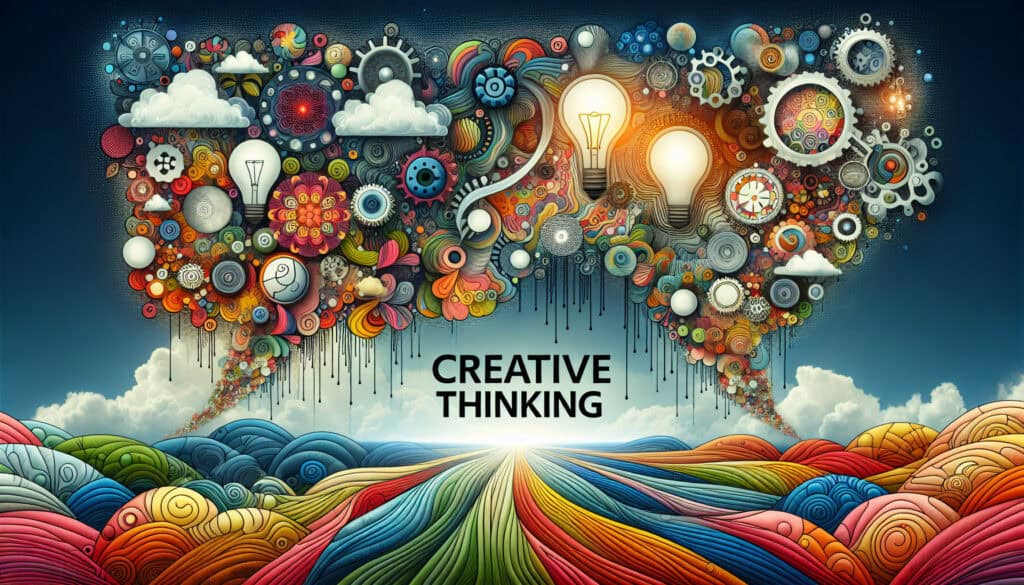The process of generating new, novel, or useful ideas.
- Methodologies: Customers & Marketing, Ideation, Product Design
Creative Thinking

Creative Thinking
- Agile Methodology, Brainstorming, Creativity, Design Thinking, Generative Design, Innovation, Open Innovation, Problem Solving Techniques, User-Centered Design
Objective:
How it’s used:
- It is a way of looking at problems or situations from a fresh perspective that suggests unorthodox solutions. It involves techniques like brainstorming, lateral thinking, and mind mapping.
Pros
- Leads to innovation and the development of new products and processes; helps to solve complex problems that have no obvious solution; can create a competitive advantage.
Cons
- Can be unstructured and difficult to manage; success is not guaranteed, and it often involves many failed ideas; it can be difficult to foster in some organizational cultures.
Categories:
- Ideation, Problem Solving
Best for:
- Generating novel ideas and solutions, especially for open-ended problems where innovation is required.
Creative Thinking serves as a powerful catalyst for innovation across various domains, including technology, consumer goods, and healthcare, where the design and development of products and solutions require fresh approaches to address unique challenges. Industries like automotive and electronics frequently engage in brainstorming sessions, fostering a culture where teams collaboratively explore unconventional ideas that expand the possibilities for product functionality and user experience. During early project phases such as concept development and ideation, participants from diverse backgrounds, including engineers, designers, and marketing specialists, contribute to the dialogue, leveraging their different viewpoints to formulate robust and varied solutions. Techniques like lateral thinking encourage participants to break away from traditional logical approaches, while mind mapping organizes thoughts and promotes connections between seemingly unrelated ideas, thereby expanding the creative space. Organizations that apply Creative Thinking methodologies often witness substantial increases in innovation speed and efficiency, leading to the rapid development of new features and services that keep pace with market demands and consumer preferences. Companies that prioritize this methodology cultivate environments that empower teams to challenge the status quo, giving them a competitive edge that can translate into market leadership.
Key steps of this methodology
- Identify the problem or challenge that needs addressing.
- Conduct brainstorming sessions to generate a wide range of ideas.
- Utilize lateral thinking techniques to explore unconventional approaches.
- Create mind maps to visually organize thoughts and connections.
- Encourage the combination of ideas to form innovative solutions.
- Select the most promising ideas for further development and prototyping.
- Iterate on the selected ideas through feedback and refinement.
Pro Tips
- Implement regular "reverse brainstorming" sessions where team members identify ways to achieve the opposite of desired outcomes, uncovering hidden challenges and fostering innovative solutions.
- Encourage cross-disciplinary collaboration to infuse diverse viewpoints; unconventional insights can lead to breakthroughs that are not typically considered within a single field.
- Leverage technology like AI and data analytics tools to simulate scenarios and visualize abstract ideas, pushing the boundaries of traditional brainstorming outcomes.
To read and compare several methodologies, we recommend the
> Extensive Methodologies Repository <
together with the 400+ other methodologies.
Your comments on this methodology or additional info are welcome on the comment section below ↓ , so as any engineering-related ideas or links.
Historical Context
1949
1950
1950
1960
1960
1960
1960
1940
1950
1950
1958
1960
1960
1960
1960
(if date is unknown or not relevant, e.g. "fluid mechanics", a rounded estimation of its notable emergence is provided)















Related Posts
Monte Carlo Simulation
Model-Based Testing
Model Checking
Mixed Methods Research
Mistake Proofing (Poka-Yoke)
Mission Profile Testing